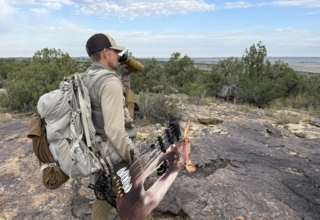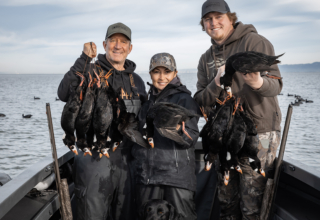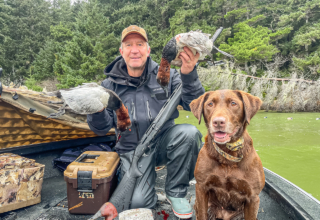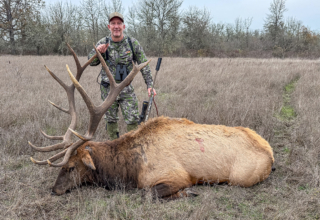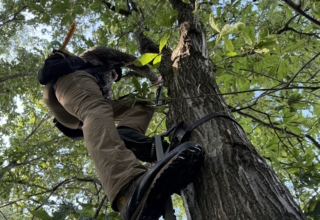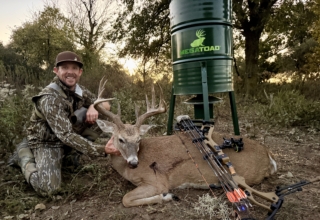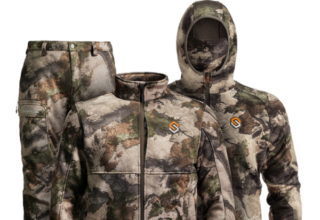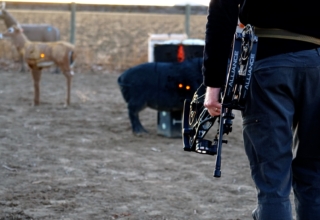Scott Haugen is a hunting legend. This season marks his 49th. These are his top-five most memorable big-game hunts.
by Scott Haugen
This year marks my 49th year of big game hunting. Like many of you, I grew up in a hunting family.
Over the past 25 years, I’ve been fortunate enough to make a living doing what I love: hunting. Writing about the journey is my true passion. I also hosted multiple outdoor television shows for 14 seasons. To fulfill our episode needs, I would sometimes go on over 60 big game hunts a year around the world. I’ve been fortunate enough to take hundreds of big game animals, whether through sport hunting, subsistence hunting while living in remote Alaska with my wife, or for work as a TV host and outdoor writer.
I’m often asked what my most memorable hunts have been. It’s not an easy question to answer. For this story, when contemplating my top five most memorable big game hunts, I narrowed it down to North America. The journey down memory lane made me reflect deeply, unveiling thoughts and feelings I’d long since tucked away. It made me realize how lucky I’ve been.
The stories below aren’t simple adventures of each hunt. Instead, they’re examining what went into each experience and what feelings emanated from the particular hunt that made it so memorable.
#5 – Caribou In The Arctic
In 1990, my wife, Tiffany, and I moved to Alaska’s high Arctic. Fresh out of college, jobs as school teachers landed us in one of the most remote villages in North America. Point Lay is an Inupiat village located on the Arctic Coast, southwest of Barrow. Less than 100 people called it home during our residency. There were no stores. The only meat we ate while living there was what I hunted.
Caribou were our primary source of protein. We ate a lot of them during our seven years of living in the Arctic, both in Point Lay and in Anaktuvuk Pass.
The most memorable caribou hunt found me seven miles from home on the flat tundra. It was early August, and we had no meat in the freezer. I set out early in the morning on a four-wheeler. Driving a quad on the tundra is far from easy when there are no trails or river banks to follow. The going is painfully slow.
This far north, the landscape is flat. When the tundra is covered in snow in winter, the land resembles the moon. Reaching high points to glass for big game is a rare luxury. Still, when glassing the seemingly lifeless tundra, the number of caribou scattered about never ceased to amaze me. They were invisible to the naked eye.
When I pulled up to the edge of the Kokolik River that had carved its way into the tundra over thousands of years, I spotted three bull caribou thrashing the alders on the opposite bank. I hopped off the quad, hustled down the riverbank, and made a move. The water level was low on this August day. The alders were thick.
As with many tundra streams, the Kokolik was recessed into the landscape. You wouldn’t know it was there unless standing on its banks. The heavily foliated alders provided the necessary cover to get me where I wanted to be.
When I rounded a bend in the river, nearly 100 bulls came into view. Every bull carried a velvet rack. They sauntered from alders on the opposite shore and swam the river. Some bulls stopped to drink, while others pushed forward.
As soon as they hit the gravel bar, every bull shook, sending sprays of silver water into the Arctic air. My rifle lay on the tundra. I watched in awe. Inside 100 yards, the shot would have been easy. No thought of pulling the trigger entered my mind.
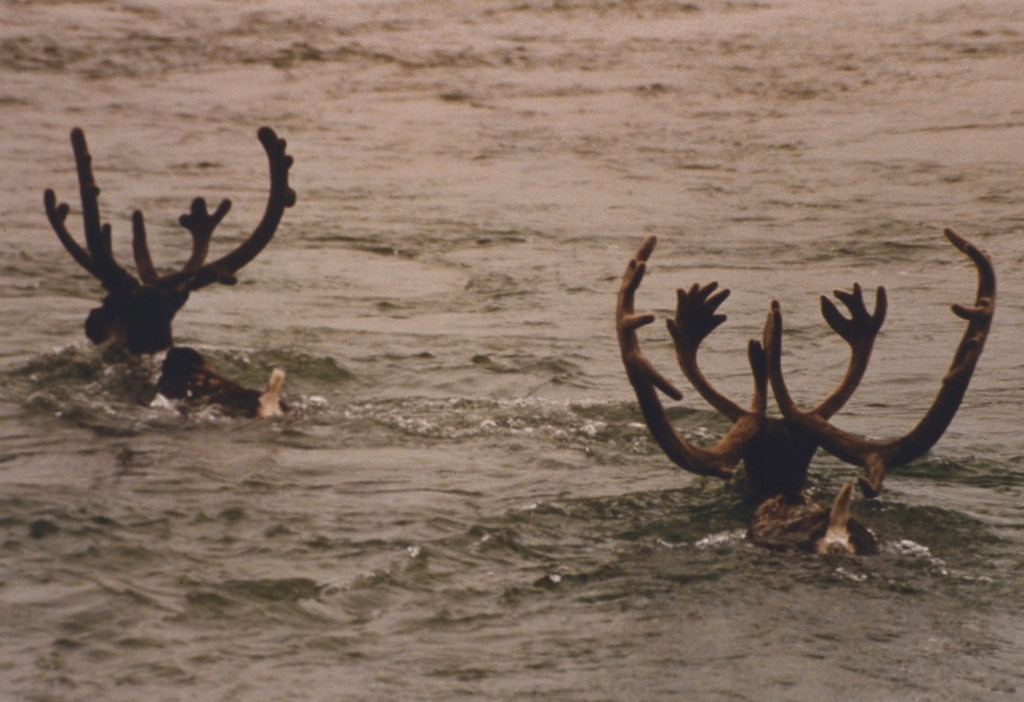
Many bulls approached within 50 paces of where I sat, backed against a curtain of alders. When bulls disappeared behind cover, I inched closer. Soon, every bull began thrashing its thick, heavy rack. Some were less than 20 yards away.
When a bull began terrorizing the opposite side of the same alder bush I sat against, it jolted me. “We need meat,” I remembered, almost in a panic. When the bull sauntered around the edge of the bush, bloody velvet mingling throughout its rack, I held out the rifle and pulled the trigger. At four paces, there was no need to shoulder and aim the rifle.
At the shot, a few bulls pranced onto the gravel bar, unsure of what had happened. Most kept punishing the alders. I shot another bull as it stood on the round river rock.
I was using a pre-’64 Model 70 Winchester Repeating Arms chambered .30-06, one my grandmother gifted me on my 12th birthday. It was my grandpa’s rifle, one he grasped in death when deer hunting. He suffered a massive heart attack. I was only two years old at the time. I still have that precious rifle.
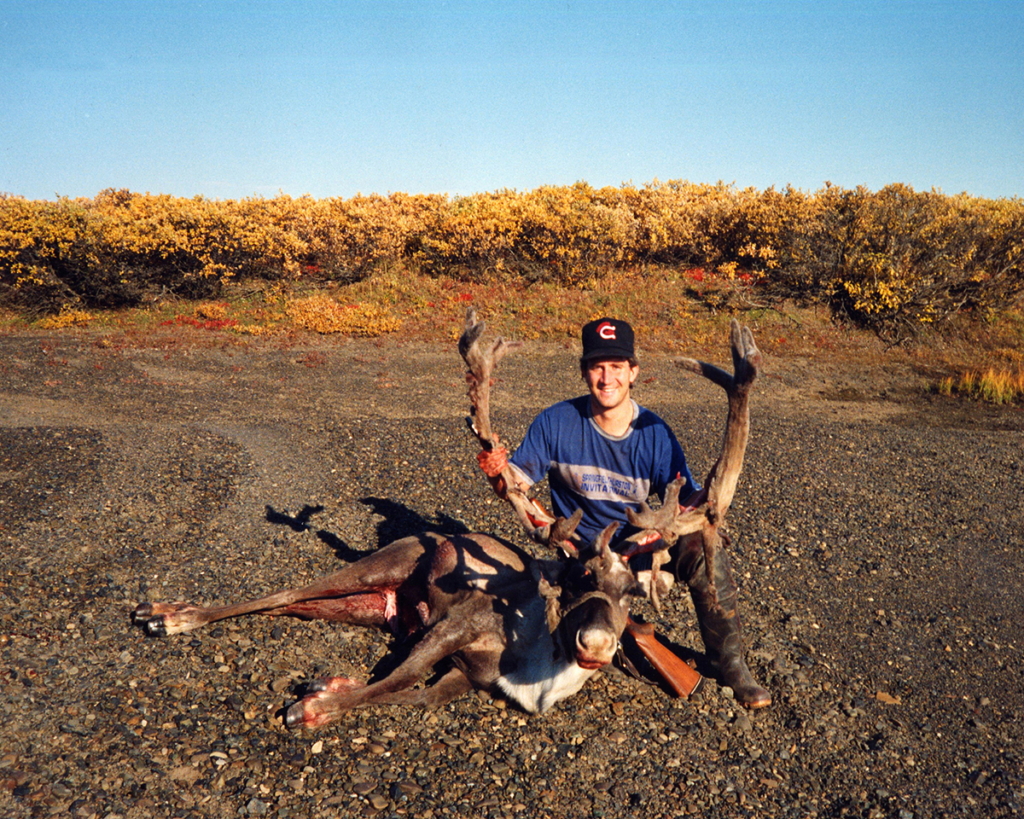
While I’ve shot many caribou over the years, most for subsistence purposes, this encounter was one of the most spectacular displays of raw nature I’ve ever been a part of. It felt like I was watching a National Geographic documentary, only I had a front row seat, in person. It was a sight I yearned to see from a young age. I was living the dream.
#4 – Dall Sheep Double
When Tiffany and I moved to Anaktuvuk Pass, Alaska, in 1993, Dall sheep were added to our big-game subsistence menu. As a resident of the village, I could kill four sheep a year: one under a sport hunting license and three under subsistence. Here, in the heart of the Brooks Range, there was no shortage of white sheep.
One hunt found my Inupiat hunting and trapping partner, Ben Hopson, shooting a caribou late in the afternoon. It was high on the mountain. It took us a long time to reach and break down the bull. We spent the night camped on a river, as planned.
The next morning, I rolled over in my sleeping bag, unzipped the tent, and spotted a band of Dall sheep in the rocky crags above. I grabbed the spotting scope, and when I put the tripod legs in the sand, it wasn’t level; one leg sat in a massive grizzly bear track that sunk deep into the wet sand. The beast had walked around our entire tent in the night, less than two feet from our heads. We never even heard it.
Three hours after spotting the sheep, Hopson and I were in shooting position. We worked hard to climb the steep, rocky mountain before the rams left. When we belly crawled over the last knoll, six mature rams were feeding less than 50 yards away. Not wanting to ruin the meat, Hopson attempted a headshot. He missed. Instantly, the rams were off, sprinting away. I dropped one that toppled over the edge of a cliff. Hopson emptied his rifle but missed.
The five remaining rams plunged into a massive ravine. We lost sight of them for several minutes. Then, finally, the band emerged on the opposite side, over 300 yards away amid some of the most rugged, rocky cliffs in the Brooks Range.
“You shoot, it’s too far for me,” Hopson insisted. Gaining a solid rest on a rock, the shot toppled a big ram. It free-fell more than 300 feet through the air, bounced off rocks, tumbled end over end, then slid down a shale chute. It rested right next to the first ram.
With three big-game animals and our camping gear loaded in the Argo, we headed for home. The load was heavy, and the rocky terrain presented a challenge for the machine. Four of the eight tires eventually popped, stranding us in a valley just before sundown. Snowcapped peaks surrounded us. We built a fire and ate fresh sheep. We pitched a tent, confident that someone would come looking for us in the morning, as we’d told our wives we’d be home for work on Monday morning. It was Sunday night.
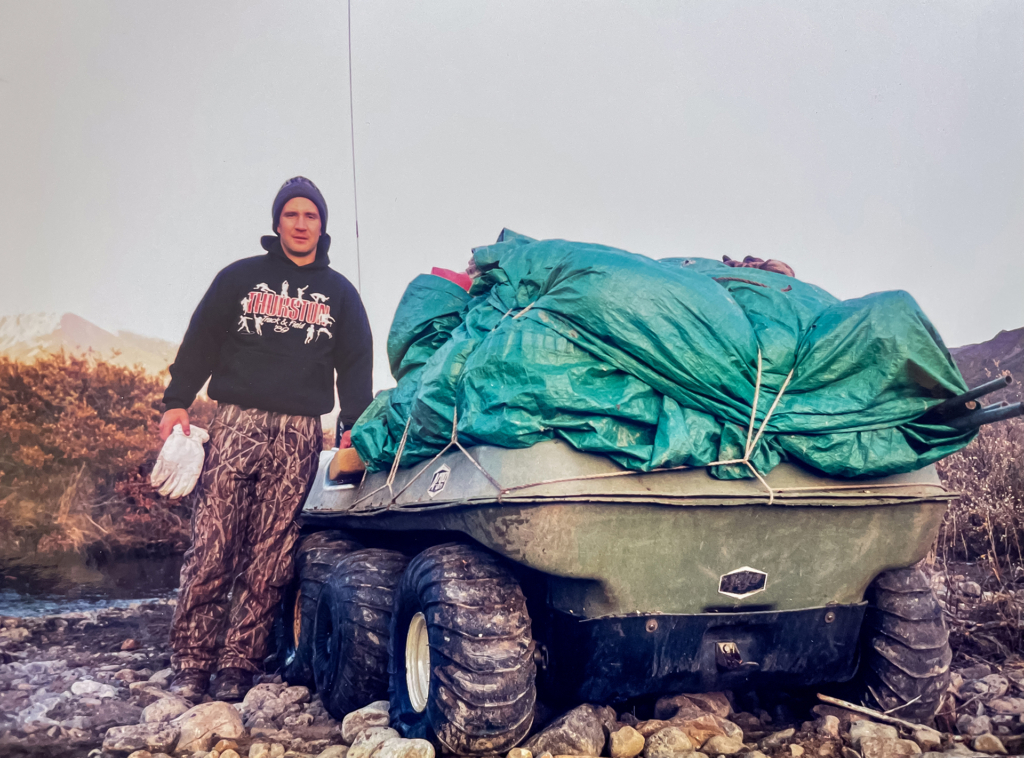
Just after midnight, we heard an Argo approaching. When we got out of the tent, a faint green line of Northern Lights painted the sky above the snow-covered mountains. The three Inupiat men who had come looking for us were glad we were okay and thankful that we broke down on the main trail. Over the next four hours, we all sat, drank coffee, and took in a spectacular light show.
Chartreuse, pink, purple, and turquoise Northern Lights danced and swirled to a rhythm all their own. The men had lived their whole lives on the North Slope. All agreed it was the most incredible, colorful display of the Lights they’d ever witnessed. It was one of the most memorable experiences of my life, and I had hunting to thank for it.
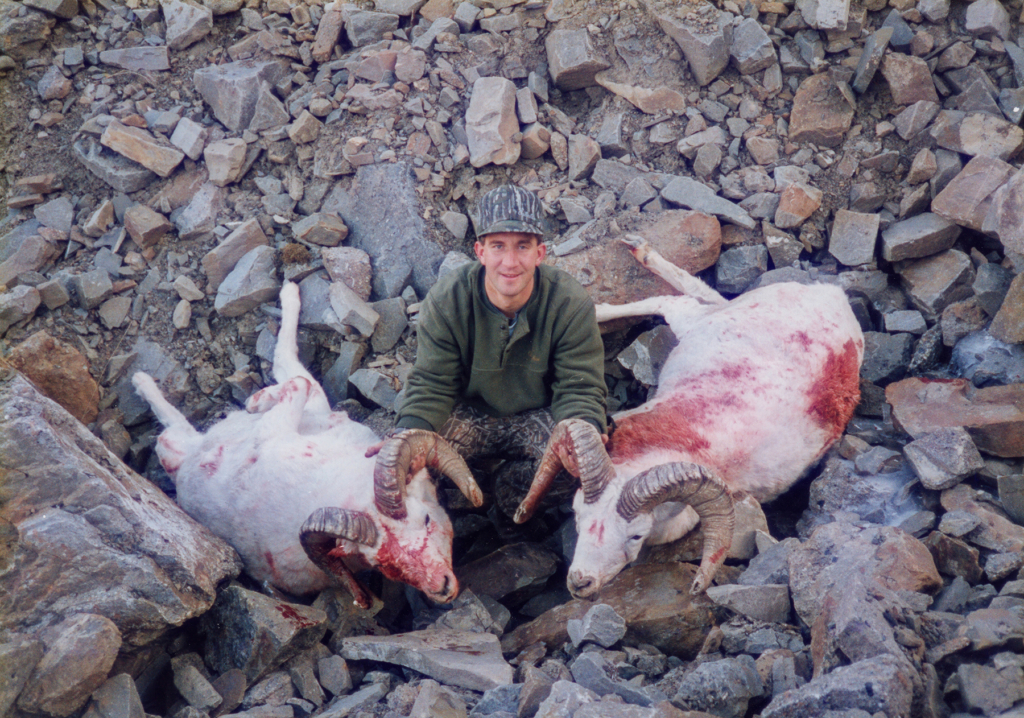
To Read Haguen’s Five Hardest Big Game Hunts, Click Here
#3 – Record-Class Brown Bear
As a kid, I dreamed of hunting an African lion and a brown bear. Not just any brown bear, but a 10-footer. I’ve loved bears since I was very young. Perhaps it was because of the books I read in the 1980s about Bill Pinnel and Morris Talifson, the legendary brown bear guides on Kodiak Island. I was also aware of the rarity of getting a 10-foot bear. Many hunters never lay eyes on a true 10-footer, let alone shoot one.
I’d shot inland grizzly and coastal brown bears before, but nothing close to 10 feet. In 2014, I connected with a good friend and noted brown bear guide, Bruce Hallingstad, owner of Becharof Outfitters. I’ve hunted and fished with Bruce a lot. He’s a hard-core guide with decades of experience; a hard working man with a heart of gold. I wasn’t a resident of Alaska at the time, so I had to hire a registered guide. With Bruce’s history of getting world-class bears, the choice was easy.
Two days before leaving my Oregon home for the mid-May hunt, Bruce called. He thought we should move the hunt to the next available season, as unusually hot temperatures halted bear movement. Thus far, his hunters had been 1 for 8; he was used to near 100 percent success on spring hunts. I phoned another outfitter buddy to the north of Bruce to see what their season was like. That outfitter is also usually 100 percent on shot opportunities in the spring. They were 0 for 11. In my mind, the bears had to show up, eventually. I didn’t want to cancel. This time of year in Alaska is one of my favorites.
I flew into King Salmon, Alaska, and then took a 30-minute bush plane flight to Bruce’s camp on the Egegik River. While I was unpacking in our cabin, Bruce spotted a bear. We’d been in camp a total of seven minutes.
It was obvious the bear was a giant, even from two miles away. Through the mirage on the tundra, the bear’s hindquarters were massive, its head giant in the spotting scope.
It was a game of cat and mouse. Eleven hours later, we finally caught a break. One shot with a Weatherby Magnum .338-378 topped with a Trijicon 3×9 AccuPoint dropped the brute. An insurance shot with a 225-grain Triple Shock bullet kept it down.
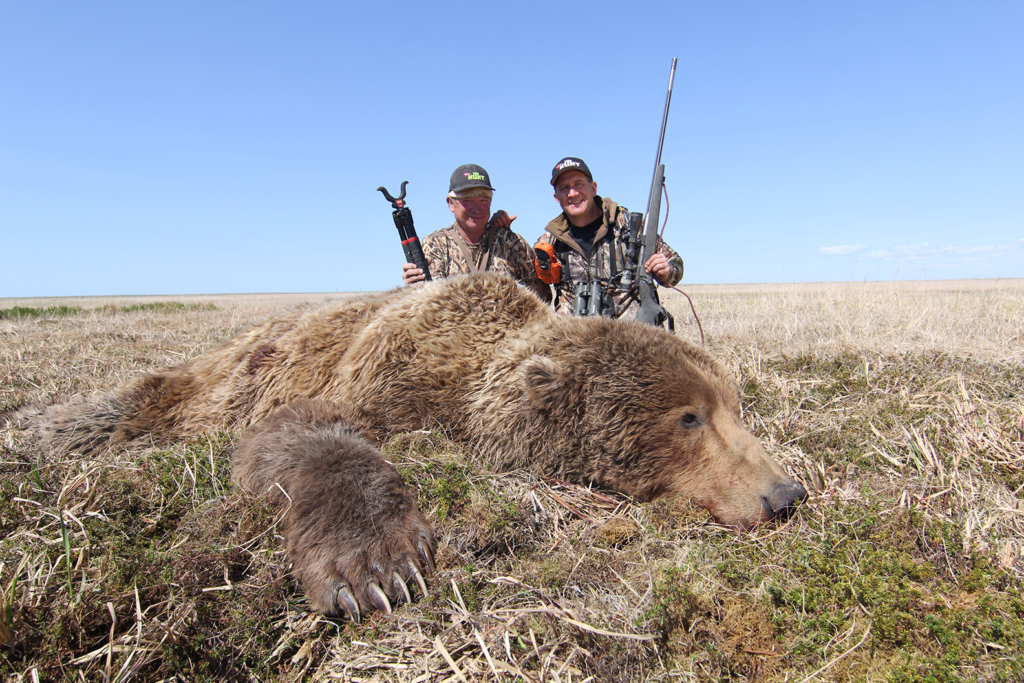
The old boar was in poor condition. In its prime, it would have tipped the scales to nearly 1,500 pounds. Its teeth were split, broken, and both jaws were infected. We agreed it would have likely been the bear’s last year.
The bear squared an incredible 10 feet 9 inches and was officially aged at 23 years old. Its skull measured 29 5/16 inches. It’s the first animal I’d ever walked up to where a solemn feeling consumed me. “If I never shoot another animal in my life, I won’t care,” I told Bruce. He smiled. He knew how much this moment meant to me.
We stood over the bear for several minutes, silently admiring its every feature, pondering what its life must have been like.
“I’ve seen this bear three times over the years,” Bruce said. “Two falls ago, we couldn’t get to him. The following spring, I had a world-renowned bowhunter who was shaking so hard he couldn’t draw his bow. The big boar walked by inside 20 yards. Back then, it was the biggest bodied bear I’d ever seen, a truly magnificent creature. Then, last fall, I had a rifle hunter inside 100 yards of the bear, but he wouldn’t shoot because he didn’t believe me when I said the bear was over 10 feet tall. It was that guy’s first bear hunt; he didn’t deserve this bear.”
Bruce is also a taxidermist. He mounted our bear. I look at it every day I’m home, a vivid reminder of the pinnacle of a blessed career. If it all ended tomorrow, I’d be just fine.
#2 – Man-Eating Polar Bear
One dark, bone-chilling morning, I got an authentic taste of what living in the Arctic was all about. But this hunt was different. This hunt was for a polar bear that had just killed a man. I was tracking it—flashlight in hand—amid temperatures of 42 degrees below zero and 24 hours of darkness.
As hunters, we appreciate how being in the moment separates us from the distractions of daily life. When pursuing man-eaters, the disconnect is accentuated
beyond compare. I love hunting for a living, but if I could figure out a way to do it by targeting man-eaters, that would be the ultimate dream job. The challenges, thrills, uncertainty, and adrenaline rushes never grow old. The encounters spike my senses to a level I never thought humanly possible. You hear things you would never hear. Smell stuff you could never detect. You feel intangible things, and you see things that few others in the world ever will.
I’ve hunted man-eating lions in Africa, as well as man-eating Nile crocodiles. I’ve chased a man-eating tiger in Sumatra, Indonesia, and though I was close, couldn’t get a shot in the tangled mess of jungle where the striped cat buried itself, a pack of hounds nipping at it from every direction. This was the first documented instance of a polar bear killing a human. However, I’m sure it wasn’t uncommon before the white man infected the world of the indigenous Inupiat peoples of the Arctic.
The tracking job on this polar bear hunt was made easier by the abundance of human blood. Despite the extreme cold, I was hot and sweating. The entire story is astonishing. I’m sure Grandpa was smiling from above when I caught up to the bear on the pack ice and dropped it with one shot from his Model 70.
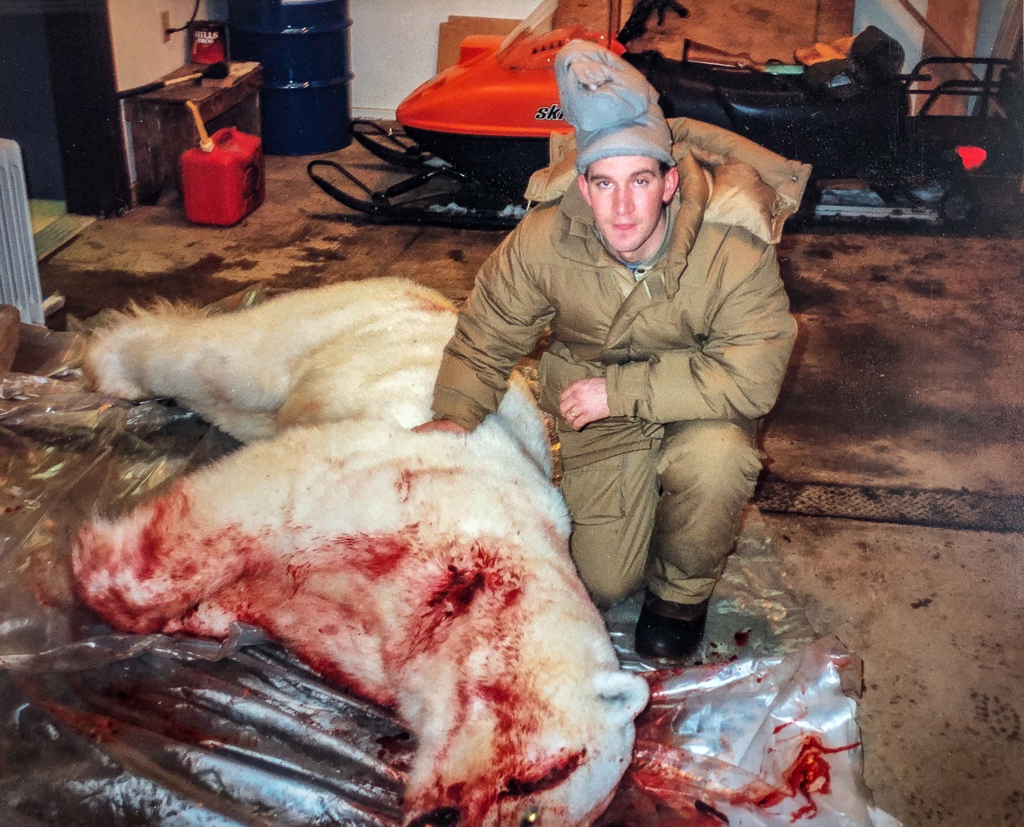
If you want to see this man-eating polar bear, it’s mounted and standing in the corner of a science room at Homer High School. Just ask someone in the office if you can see the bear. They get visitors from around the world every year who are interested in the opportunity to see it, and they enjoy sharing it. When you see it, close your eyes and imagine it being -42 degrees.
#1 – Charging Mountain Lion
Having experienced all I have in the big-game hunting world, no hunt hit me harder than one in April of 2024. The most remarkable thing was that it was less than two miles from my home in Oregon. A mountain lion popped up on one of my Moultrie Mobile cellular trail cameras app in the middle of the day. Within 20 minutes, I was calling for the cat. I shot it as it sprinted directly at me at top speed. Read the full story of the hunt posted here.
What I didn’t include in that story was how, over the next four days, I was on an adrenaline high I never knew possible. On this hunt, I was solo. Not for a moment did I feel nervous or in danger, other than a brief moment when I was on hands and knees in tangled briars and thick brush, shotgun in my grasp, trying to find the cat I’d just shot. I was consumed by the focus required to pull it off and loved every second.
That night I got two hours of sleep, four hours the following night, and about the same the next two nights. I couldn’t sleep and didn’t want to. Big-game hunting for predators is exhilarating. The moment was so rare, so special, I couldn’t relive it enough. I didn’t want the feeling to fade.
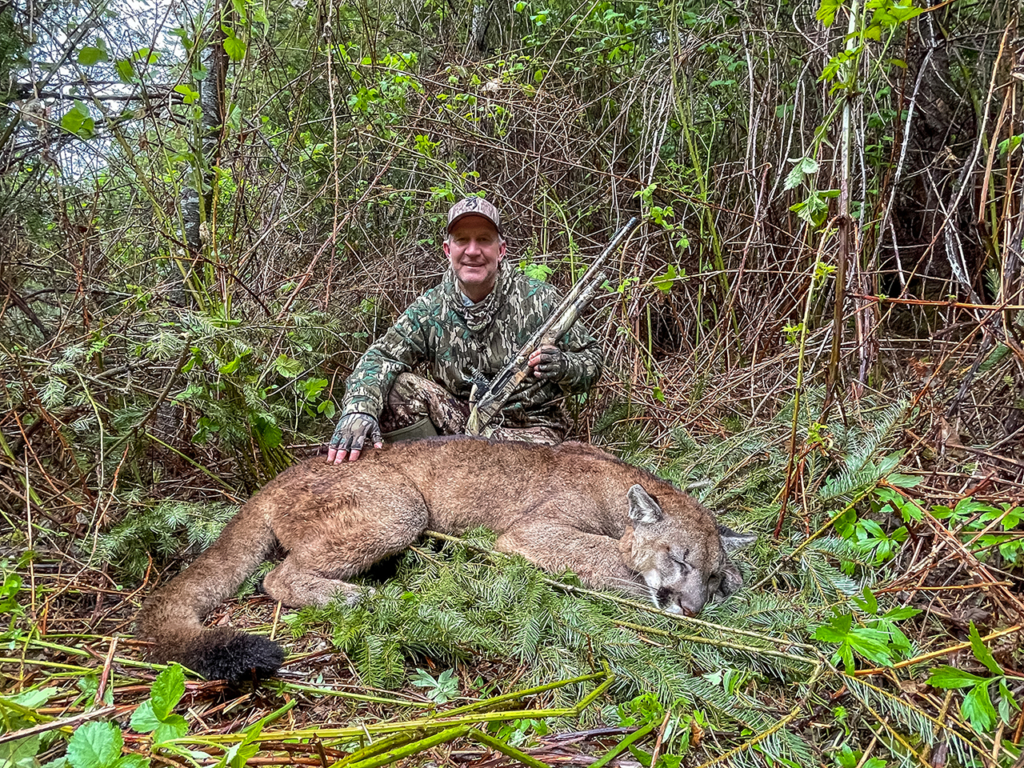
As with the big-game man-eaters, everything stemming from this cougar hunt appeared brighter. My senses of smell and sound had never been sharper. Pure adrenaline is a powerful thing. The only feeling I’ve had somewhat close to it was when I stepped on a bald-faced hornet nest while on a bear hunt. I got stung several times. I’m allergic to bees; I had an EpiPen. The euphoric sensation that instantly enveloped my body approached the feelings of the cougar encounter.
Part of the cat rush had to do with how challenging this hunt was. I’d been after cougars—calling them, mainly—for three years on this timbered ridge in the Cascade Range. More times than not, I carry a shotgun because the brush is so thick and shots would come at close range where I was calling. The land is rugged, and if not on cats shortly after they appear on trail camera, the odds of calling one in are virtually zero.
I had one big tom come within 20 yards of me once. I’d been calling for over 30 minutes. When I looked up, its blocky head was glaring at me. I only had to move the gun a matter of inches for the shot, but before I could do that, the cat vanished. It had materialized from nowhere. Who knows how long it had been watching me? In this dense habitat, calling cougars is the most challenging big game hunt I’ve encountered in North America.
On hunts where you can become the prey, senses dangle outside your body. Your mind is in a vacuum. You notice things you’d otherwise miss, and you know one mistake can cost you a shot opportunity, or worse.
While there have been many unforgettable hunts for elk, moose, deer, and more over the years, these stand out as the most memorable. They were about much more than simply filling a tag. Each encounter changed my life.


